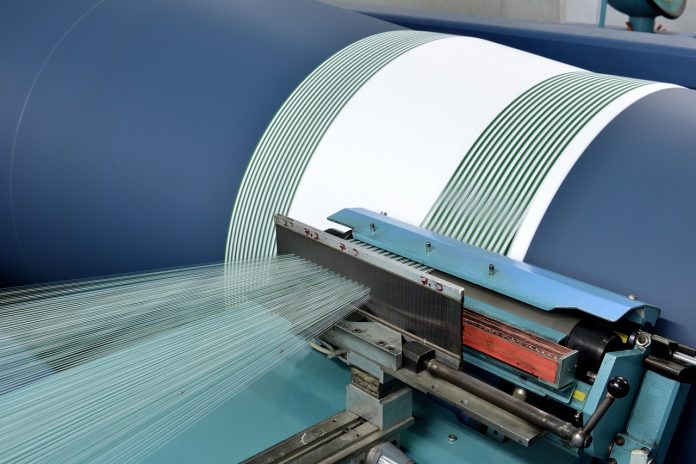
Skills gaps are appearing and widening at an alarming pace across many verticals and markets. That’s due to the increasing pace of retirement among an aging workforce. Those main issues, along with increasing automation, the collapse in globalization, and, soon, a generation that has used AI to bluff or cheat their way through college and hiring, will also impact manufacturing.
Trends Behind the Growing Skills Gap
Whatever the politics behind this barrage of relentless trends, tariffs, and other impacts. The widening of the skills gap and a talent shortage up the value chain will impact manufacturing dramatically.
The Challenge of an Aging Workforce
A recent report, The State of the Manufacturing Workforce in 2024 and Beyond (PDF) highlights that experienced workers are leaving manufacturing, and the industry is struggling to attract younger replacements.
Some companies are failing to modernize, while others have hired their way out of previous skills gaps. Many manufacturers have skipped or minimized developing internal training schemes to build up internal skills and knowledge.
With early retirement in manufacturing also impacting the industry, manufacturers need to hire fast, while developing loyalty and training for skills that are hard to find.
Dealing With the Rise of Automation
Manufacturing at all levels, from the simplest production lines to the complexity of cutting-edge automotive plants, all see the value of automation. However, many companies fail to realize the impact on the human aspect, creating disengaged workers who see no future.
Automation needs to be integrated across any business with an equal focus on upskilling, adding value, and creating opportunities for the workforce.
Changing the Perception of Manufacturing
In the eyes of the younger generations, manufacturing remains a soulless, dirty, and dead-end career. Those perceptions can be changed through outreach programs, expressive hiring campaigns, and marketing.
They can highlight the career benefits in a high-technology, data-focused, and dynamic ecosystem across industries and promote the noble nature and history of manufacturing. A powerful example to follow is WeSupplyAmerica, a distribution-focused media tour that highlights the impact and innovation within that industry.
Solutions to Narrow Your Skills Gap
The skills gap can be surmounted at the industry, market, and individual business levels by a range of initiatives and responses to the changing employment and retention landscape.
Training is Key to Reskilling
A successful business will ensure training is a part of workforce life from day one for new recruits, and that the business learns from employees as they leave.
In-house training is the key way to ensure your manufacturing business does not fall prey to the skills gap. Working with external or internal trainers, you can focus on your business needs, train the best people for each task, and upskill workers to leverage new technologies, software, and services as they enter the business.
Giving workers ownership and control through reskilling improves their knowledge and toolset. It also expands their interest and engagement with the business.
For example, the rise of manufacturing control software, supply chain tools, and AI-enabled SaaS tools has dominated the business landscape. They should not be the preserve of an IT closed shop but deployed across the industry to drive operational awareness among all manufacturing roles.
Use Change Management to Improve Business Operations and the Workforce
Manufacturers cannot afford to rely on old production methods or “the way things have always been done.” To remain competitive, they must look at streamlining manufacturing, supply chain, procurement, and other areas through change management.
Rather than make this a leadership-led operation, it should engage managers and workers from across the manufacturing base to build engagement. And to provide workers with the opportunity to demonstrate their technical understanding and management-level skills, thereby boosting their career opportunities.
Boost Training and Development
Beyond reskilling, every manufacturing business should consider leveraging HR to lead training and business or personal development sessions for its workers. Not every lesson needs to focus on manufacturing and industry, but on broader company and market knowledge, and soft skills that make leaders and managers better across their roles.
Training can encourage retention among workers, led by HR systems that better understand the needs of workers and their feelings around loyalty and opportunity. Some workers will be happy in their current role, or clearly disengaged, working from pay-day to pay-day, but surveys and interviews can find workers keen to learn, develop new skills, and broaden their knowledge.
These approaches, especially among companies with high turnover, can help find the competitive and driven workers who can drive the company into the future, inspire the rest of the workforce, and move up the ladder to corporate roles.
Creating and Delivering an Educated Company
These initiatives cannot work in isolation or on the whim of management or the HR department. They need to be planned, operated, and funded across the lifespan of the organization.
Leadership needs to communicate changes across the business, HR has to promote the advantages and individual benefits, and team managers must deal with the mix of enthusiasm and resentment from the workforce.
All of this will take place as manufacturing businesses evolve and adopt new processes and technology, with every step creating new learning opportunities. While automation will eradicate some roles, it will also create new ones for current workers and future hires. Still, each company must be able to show it can educate and inspire those workers through training and reskilling to keep them in higher-value work.




